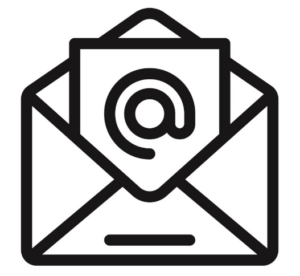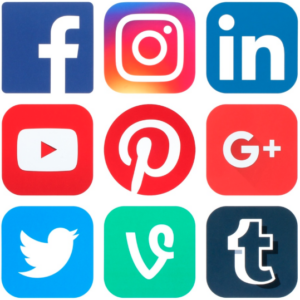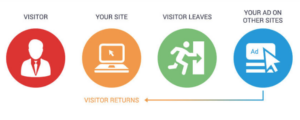
Today’s attendee marketers use 14 tactics on average over the course of one marketing campaign.

EMAIL TIP: Good subject lines entice recipients to open and read your email. Try including prospects’ names, experiment with emojis, be direct, stir up intrigue.

SOCIAL TIP: Get people to promote on your behalf. Ask your sponsors, speakers, and event principals to post on their social channels about your event and their plans to participate.

INFLUENCER TIP: Develop an agreement with your influencers that clearly outlines your expectations, including start and end dates, number of posts/communications, and any compensation or perks.

RETARGETING: Retargeting can supplement your email marketing campaign with online display advertising. Upload your email list to a provider to serve ads to your defined group as they browse the web.

GEOFENCING TIP: If you’re aware of another industry event whose audience parallels the people you would like to see at your event, you can geofence that event location and deliver advertising promoting your event.
Technology has provided various tools for attendee acquisition that are affordable, so experimentation is key. Zero in on the platforms and tactics that are most effective with your particular audience and then double down.
Bring Them Running
Market your event without breaking the bank.
By Elena Grant
I see it all the time. An event has great content, networking opportunities, sponsors, and maybe even an exhibit floor, but planners struggle with the one most critical piece: getting attendees to come.
The key is to not automatically do the same thing to market your event from year to year, whether or not that strategy worked. Instead, measure the effectiveness of your promotion tactics and use that to inform your next go-round. There are so many viable event promotion strategies today that you don’t need to waste time and effort on ones that don’t work for your audience.
Here, I will share some marketing strategies, within four major channels, that you can easily implement to create a draw to your event — without blowing your budget. According to the 2018 How to Grow Attendance: Part 2 report by the Center for Exhibition Industry Research (CEIR), today’s attendee marketers use 14 tactics on average over the course of one marketing campaign. That’s a lot of activity and could mean a lot of expense, but it doesn’t have to. Technology advances have provided affordable, effective mechanisms for maximizing traditional channels and have yielded entirely new channels to help planners ramp up registrations.
Email is a tried and true channel for event promotion. It’s one-to-one communication that is accessible, inexpensive, and effective. The following strategies will add very little expense to your email budget but should yield higher results for your event.
Segment your audience, and provide relevant content to each group. You can segment your list in various ways, including by demographics, geography, psychographics, and behavior. For example, “behavior” in this case might be defined as loyal attendees who have been to all your events, first-time attendees, and prospects. Combining these buckets, you can create as few or as many segments as your resource capacity allows. The key is to make sure the content you send to a segment will motivate that type of individual to register for your event — say, a teaser clip of a past advertising-related session sent to the prospects on your list with an advertising-related job title.
Tease your event content. Interview your speakers or ask them each to make a short, informal video teaser about their upcoming session. Incorporate these pieces of content into your emails to get people excited about the agenda.
Send some emails as plain text, without any graphics, images, or headers. Write them in a conversational style and send them from a specific individual on your team. We often have open rates 5 to 10 percent higher on these types of emails because they read like personalized notes.
Test subject lines. Good subject lines entice recipients to open and read your email. Try including prospects’ names, experiment with emojis, be direct, stir up intrigue. For past attendees who haven’t yet registered, one of our best-performing emails includes the subject line, “Your Registration is Incomplete.” This prompts the recipient to open for more information. The message inside explains that our records show they have yet to register. Some email platforms enable you to test multiple subject lines on an initial sampling of your list and will then send the winning subject to the remainder. There have been times I thought I could guess the winning subject line, but testing proved me wrong.
Monitor your frequency. If you find you’re receiving numerous opt-out requests, reduce the number of emails you send.
Take advantage of holidays. Some of our highest open rates have been with emails sent around holidays. Include a short message of cheer and best wishes along with a subtle call to action for the event. A New Year’s email for one of our clients yielded an 8-percent increase in open rate over our average for the campaign.
SOCIAL MEDIA
Social media is an extremely effective tool for creating buzz about your event and thus broadening your reach. Authenticity on social is key, so being true to your brand — in voice and message — will resonate with your loyal audience and generate interest from prospects.
Most critically, determine where your audience is active on social, so you know how to focus your efforts. You can ask on your event registration form (“Which of the following social media channels do you use?”) and monitor user activity on each of your social properties, re-balancing your efforts accordingly. For example, we have a client that hosts a show with beautiful installations of products; Instagram works great for them. We also have a more technical client with popular online forums and groups, so LinkedIn is their main social platform for event promotion.
Whichever channels you use, make your content interesting enough to engage. Create social posts around a theme or track from your event and link to your event webpage for more information. Incorporate video. A short time-lapse video of your venue setup, messages from speakers, or testimonials from past attendees are great ways to share a visual- and audio-rich taste of your event.
Get people to promote on your behalf. Ask your sponsors, speakers, and event principals to post about your event and their plans to participate on their social channels. Take things up a notch by engaging a key sponsor or exhibitor to run a Facebook livestream (Facebook Live). This is a live video-streaming service that enables anyone to broadcast from their mobile device to their Facebook News Feed. Your sponsor or exhibitor can talk about their product or solution and how they plan to feature it at your event. For one of our clients, we partnered with Interior Design magazine to run a Facebook livestream about the trends attendees would see at the show. The video produced over 60,000 views and boosted traffic to the event website and registration page. We also created a Twitterview (a one-on-one interview on Twitter) for a client running a tile and stone event. We worked with another publication partner and the exhibiting pavilion to live-discuss the benefits of using tile over other materials. The tactic prompted over 100 registrations for the event.
Paid advertising on social media is another low-cost way to convert prospects to attendees. You can pre-set the budget for the time period during which you want to run your ads. Once your program is going, you can test different ads, track performance, and edit your campaign as needed. Strive to keep the flow from your ad to your event information unimpeded. With our Facebook ads, for example, we link directly from our ad to an event registration form that is hosted within Facebook to make the user experience seamless. This has increased our conversions by 10 percent over linking out to our website. Facebook Business provides helpful guidance for this and other campaign-management tactics. We’ve seen registrations increase by about 5 percent using Facebook advertising, so given the cost-to-benefit ratio, it has become a staple in our approach.
INFLUENCER MARKETING
According to a poll of marketing professionals conducted by software company Tomoson, “Influencer marketing was rated as the fastest-growing online customer-acquisition channel, beating organic search, paid search, and email marketing.” This tactic entails partnering with individuals who have large social followings (aligned with yours) and are willing to promote your event to them. Their positive endorsement can create a big draw — potentially at minimal expense. Influencers are often happy to partake, including attending your event, for the cost of registration and possibly travel and lodging (depending on their level of influence). Things to keep in mind when building an influencer strategy:
- Look for influencers whose audience overlaps with yours. One way to tell is by looking at an influencer’s posts. Is the content relevant to your audience?
- Develop an agreement that clearly outlines your expectations, including start and end dates, number of posts/communications, and any compensation or perks.
- Partner with your influencers to create their posts. It’s critical for them to keep their own voice and not sound overly promotional.
- Provide your influencers with a calendar of key event milestones and share your event press releases, blog posts, speakers, sponsors, and exhibitors. They can use this information to post well-timed, relevant content.
- Ideally, your influencers will attend your event and post about their experience, highlights, and takeaways.
- Take this a step further by creating a schedule for your influencers to attend key sessions, meet with sponsors, tour the exhibit floor, and participate in networking events.
- Determine what success looks like and measure against it. These metrics can include the number of overall impressions on influencer posts, the number of people influencers drive to your website or registration page (provide them with trackable links), and/or growth of your social channels.
For one client this year, we created an influencer program for which we solicited eight influencers. All agreed to partake in exchange for travel and hotel accommodations for the event. They were active before, during, and after the show, posting 657 times for a combined reach of 230,929. We greatly expanded our audience reach, and each influencer requested to participate again for the following year because they had a great experience. It was a win-win.
RETARGETING AND GEOFENCING
Retargeting (or remarketing) is an advertising strategy that involves showing ads on the web to, in the case of event promotion, prospects who have visited your website but haven’t yet registered for your event. Here’s how it works: People visit your site and are tracked using “cookies.” Once they leave the site, your ads will follow them as they browse other websites. When they click your ad, they are redirected to your registration page.
Retargeting can supplement your email marketing campaign with online display advertising. All you need to do is upload your email list to a provider (like AdRoll, Google, Facebook, or Twitter) to serve ads to your defined group as they browse the web.
Feathr is an event marketing platform that consolidates the management of event promotion into one centralized tool. It’s worth looking into if you want to implement multiple tactics, including retargeting and influencer marketing.
Geofencing marketing is a location-based service in which an app or other software uses GPS, Wi-Fi, or cellular data to trigger a pre-programmed action when a mobile device enters a geographic area, known as a geofence. Using it, you can prompt mobile push notifications, trigger text messages, or send targeted advertisements on social media and certain websites.
If you’re aware of another industry event whose audience parallels the people you would like to see at your event, you can geofence that event location and deliver advertising promoting your event. You can serve your ads to the people who enter the designated geofence at that time and for up to 30 days after.
Link your ad to your website or registration page and track the results. Geofencing is cost effective, and we have found it very useful, especially for building new market segments and reaching prospects we may not have been able to reach through other channels. We have used it for our clients around competitive events and those targeting an audience we would like to build affinity with. Geofencing can be utilized on multiple platforms, including Facebook (where it’s called “Reach Ads”) and Google Ads (where it’s called “Location Targeting”).
For one of our clients, our retargeting campaign (including geofencing) increased their 2019 event registrations by 58 percent (compared to 2018) and more than tripled their ROI, with an investment of just $5,000.
All of these strategies enable you to track how your campaign is performing, so you can change course if you aren’t getting results. Zero in on the platforms and tactics that are most effective with your particular audience and then double down. Invest more in what’s working to generate the most awareness, convert the largest number of attendees, and bring your event the highest ROI. Technology has provided various tools for attendee acquisition that are affordable, so experimentation is key. The right content, amplified in various ways, tracked and measured against goals, with course corrections as needed, will get the attendees streaming through your doors.
Elena Grant is vice president of marketing at Taffy Event Strategies. Connect via grant@pagesthemagazine.com.

